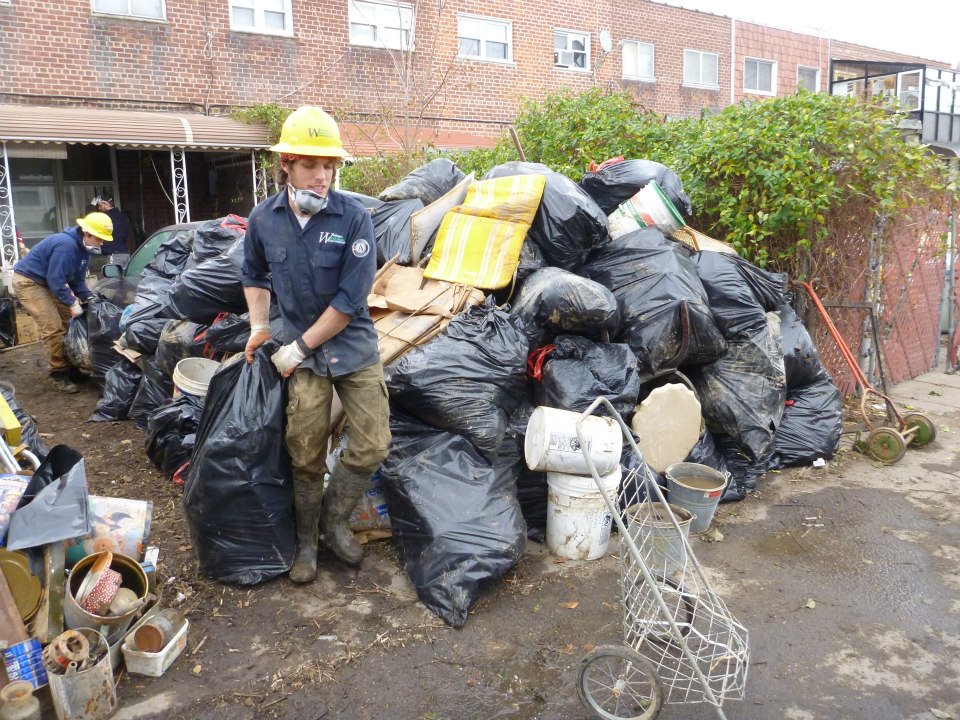

Washington Conservation Corps responds to Hurricane Sandy
Originally Posted on the Corporation for Nationl and Community Service Blog
As Hurricane Sandy bore down on the Northeast coast during the last days of October 2012, more than a dozen Service and Conservation Corps programs across the country were already mobilizing to help with the relief effort. Some Corps came from as far away as Montana, Washington, and Utah, while other programs served in their own backyard, in New York and New Jersey.
The extensive training Corpsmembers receive in Service and Conservation Corps programs prepares them to serve in numerous capacities in response to a wide range of natural and manmade disasters. Many Corpsmembers are trained in volunteer management and learn the professional skills needed to organize relief efforts and interact with victims and local responders in partnership with AmeriCorps’ Disaster Services Team.Corpsmembers cleared debris and downed trees, cleaned muck and mold from flooded buildings, and helped homeowners salvage personal belongings. They distributed emergency supplies, managed evacuation shelters, and, through their presence, offered reassurance that help had arrived and things would get done. In the two years since the storm, young people serving in Corps have completed an extensive amount of work to make homes livable, make parks and public lands safe for recreation, and make communities more resilient to the threat of future storms. Corps have re-planted damaged gardens and thousands of trees; planted many new trees to reduce erosion; and removed invasive species that took root in the months immediately following the storm. 
Some Corpsmembers gain wildland firefighting credentials, chainsaw operation certification, and wilderness first aid training, thus allowing them to respond to forest fires. Because Corps have the ability to travel where disaster strikes and bring their own disaster response and safety equipment, they can provide some of the earliest and most comprehensive service. Corpsmembers also have the land management skills to help damaged ecosystems recover once immediate needs are met.
Within just the past few months, more than 400 Corpsmembers responded to devastating forest firesin California, nearly 70 responded to forest fires in Washington state, and many others have responded to flooding in Missouri and Minnesota. In recent memory, young people serving in Corps assisted in the relief efforts after the landslides in Washington, the fertilizer plant explosion in West, TX, and flooding in Galena, AK.
When young people join a Corps program, they choose to serve. They make the decision to use their time and talents to help others. They embody an ethic of service that makes them extraordinary participants in disaster relief efforts. Corpsmembers are committed to making a difference and giving themselves entirely to the cause of putting damaged communities back together and helping families return to a normal way of life.
The experience of helping someone who has just lost everything can be heart-rending, but it is also a chance to learn about yourself. One particularly telling reflection of the service experience is that when talking to Corpsmembers who served in disaster areas, you often hear some variation of the same phrase: “The people I helped did so much more for me than I could have possibly done for them.”


































































